How to Master DIY Home Renovation on a Budget: Ultimate Guide

Welcome to our comprehensive guide to DIY home renovation on a budget! If the thought of renovating your home conjures up images of sky-high expenses and overwhelming projects, fear not. We're here to show you that transforming your living space doesn't have to break the bank.
Throughout this guide, we'll provide you with cost-effective ideas and creative solutions that will empower you to take control of your home renovation projects without draining your wallet. Whether you're a seasoned DIY enthusiast or just starting to dip your toes into the world of home improvement, we've got you covered.
Table of contents
DIY Home Renovation: What You Need to Know
Before diving into your DIY home remodel project, it's important to familiarize yourself with the essentials, including the benefits, tools, equipment, and safety precautions. Let's explore each of these aspects in detail:
1. What are the Benefits of DIY Home Renovation?
Cost Savings: One of the primary advantages of DIY home renovation is the potential for significant cost savings. By taking on the tasks yourself, you can eliminate labor costs.
Greater Control: DIY home improvement projects put you in the driver's seat, allowing you to have full control over the design and execution of your home renovations. You can tailor every detail to reflect your unique style and preferences, resulting in a truly personalized space.
Sense of Accomplishment: Completing a do-it-yourself home renovation project can be immensely satisfying. The feeling of accomplishment also boosts your confidence and empowers you to take on more ambitious projects in the future.
Learning Opportunities: DIY renovation provides an excellent opportunity to learn new skills and expand your knowledge of home improvement. From basic carpentry and painting techniques to plumbing and electrical work, each project offers a chance to enhance your DIY skillset.
Flexibility and Adaptability: DIY projects allow for flexibility in terms of timing and scheduling. You can work at your own pace and adjust your renovation plans to fit your availability and budget. This flexibility is particularly beneficial if you have a busy lifestyle or want to tackle projects gradually.
2. What Essential Tools and Equipment Do You Need for DIY Projects
Before starting any DIY renovation project, make sure you have the necessary tools and materials. Assess your existing tool collection and invest in any additional tools required for your projects. Consider renting tools for one-time use to save costs. Create a checklist of materials needed for each project and ensure you have everything on hand before starting.
Here are some essential items you should consider having in your toolkit:
- Measuring Tools: A measuring tape, level, and ruler are indispensable
- Power Tools: Depending on the nature of your projects, you may need a set of power tools, including a drill, nail gun, circular saw, jigsaw, and sander. These tools make cutting, drilling, and shaping materials significantly easier and more efficient.
- Hand Tools: Hammers, screwdrivers, pliers, wrenches, utility knives, and chisels.
- Safety Gear: Safety glasses, gloves, dust masks, and ear protection. Protective equipment is vital when working with power tools or handling potentially hazardous materials.
- Ladders and Step Stools: Having a sturdy ladder or step stool is crucial for accessing high areas safely.
- Painting Supplies: For painting projects, gather supplies such as paintbrushes, rollers, trays, drop cloths, painter's tape, and sanding blocks
3. Safety Precautions and Tips to Follow When Carrying Out Your Home Makeover
While renovating a house on a budget can be fulfilling, it's vital to prioritize safety throughout the process. Here are some important safety precautions and tips to keep in mind:
- Educate Yourself: Before starting any project, familiarize yourself with the necessary techniques, materials, and safety procedures. Research online resources, watch tutorials, or consider attending workshops to expand your knowledge.
- Use Protective Gear: Always wear appropriate safety gear, including goggles, gloves, masks, and ear protection, when working with power tools, chemicals, or hazardous materials.
- Follow Instructions: Read and understand the manufacturer's instructions and guidelines for all tools, equipment, and materials you use. Follow proper usage and safety recommendations to prevent accidents.
- Work in a Well-Ventilated Area: When using paints, solvents, or other chemical products, ensure proper ventilation to avoid inhaling harmful fumes. Open windows, use fans, or work outdoors whenever possible.
- Take Breaks and Stay Hydrated: DIY projects can be physically demanding. Take regular breaks to avoid fatigue, stay hydrated, and listen to your body. Overexertion can lead to accidents and injuries.
- Know Your Limits: Be realistic about your skills and capabilities. If a project requires specialized knowledge or expertise, consider hiring a professional to avoid potential risks.
- Keep Children and Pets Safe: Create a designated safe area away from renovation zones to prevent accidents involving children or pets. Keep tools and hazardous materials out of their reach.
Remember, safety should always be a top priority. If you're unsure about handling certain tasks or encounter complex issues, it's wise to consult professionals or seek guidance from experienced DIYers.
How to Tackle Your DIY Home Renovation Projects
In this section, we'll provide a step-by-step guide to help you plan and execute your DIY renovation projects successfully, assess the condition of your home, and determine the order of renovations for maximum efficiency.
1. Assess the Condition of Your Home
Walk through each room and make note of any areas that require attention or improvement. Look for signs of wear and tear, outdated features, or functionality issues. Identify the areas that require immediate attention.
2. Identify Areas for Improvement
Once you've assessed your home, make a list of the areas that you want to improve or update. Consider both aesthetic and functional aspects. Do you want to modernize your kitchen? Upgrade your bathroom fixtures? Enhance the curb appeal of your exterior. Identifying the specific areas for improvement will give you a clear focus and help you plan your budget and timeline accordingly.
3. Familiarize Yourself With Building Codes and Permits:
Ignoring building codes and permit requirements can lead to costly consequences, including fines and potential hazards. Stay on the right side of the law with these tips:
Research Building Codes: Familiarize yourself with local building codes and regulations before starting any renovation project. These codes ensure the safety, integrity, and compliance of your home improvements.
Obtain Permits: To find out if you need a permit, call your local permitting office. They are usually happy to answer questions. However, sometimes the only sure way to know if a permit is required is by applying for one. Permits may be necessary for structural changes, electrical work, plumbing alterations, or adding square footage to your home.
Consult Inspectors: During the renovation process, schedule inspections as required by local authorities. Inspectors can ensure your project meets code standards and identify any issues that need addressing.
4. Plan and Prioritize Your Projects
After identifying the areas for improvement, it's time to plan and prioritize your projects. Start by breaking down each renovation project into smaller tasks. Consider the complexity, time, and cost involved in each task.
Determine which projects you can handle on your own and which ones may require professional assistance by evaluating your skills. DIY projects like painting, basic carpentry, flooring, and landscaping can save money, while structural changes, electrical/plumbing work, and complex projects are best left to professionals.
Once you have a comprehensive list of tasks, prioritize them based on urgency, budget, and overall impact. It's often recommended to start with smaller, manageable projects that provide noticeable results and build your confidence as you progress. This could include painting a room, updating light fixtures, or refinishing cabinets. By tackling smaller projects first, you'll gain experience and momentum for more significant renov
Budgeting Your DIY Home Renovation
Before diving into home refurbishing, it's crucial to work out the renovating cost by planning your budget and managing it effectively. By taking the time to establish a well-thought-out budget, you can make informed decisions, prioritize expenses, and ensure that your renovation stays within your financial means.
Budgeting is essential for maintaining financial control and realistic planning during your renovation. It allows you to allocate resources wisely, explore cost-saving options, and avoid financial stress, ensuring a smooth DIY home renovation without overspending or compromising your financial well-being.
1. Creating a Home Renovation Budget Spreadsheet
To effectively manage your renovation budget, it's helpful to create a comprehensive budget spreadsheet. Here are some key steps to consider:
- List Your Renovation Goals: Begin by listing all the areas and aspects of your home that you plan to renovate. This includes specific rooms, features, and desired improvements. Be as detailed as possible to ensure you capture all potential expenses.
- Research and Estimate Costs: Conduct thorough research to estimate the costs associated with each renovation goal. Explore prices of materials, tools, and any professional services you may require. Consider obtaining multiple quotes to compare prices and find the best deals.
- Break Down Expenses: Divide your expenses into categories such as materials, labor (if applicable), permits, tools, and miscellaneous costs. This breakdown will provide a clear overview of how your budget is allocated across different aspects of your renovation.
- Set Realistic Budget Limits: Based on your research and financial capacity, establish realistic budget limits for each category. Assign an approximate amount for each renovation goal, ensuring that your total budget aligns with your financial resources.
- Track and Update Expenses: As you proceed with your DIY projects, diligently track your expenses in the budget spreadsheet. Record actual costs, compare them with the estimated figures, and make adjustments as necessary.
- Account for Contingencies: It's wise to set aside a contingency fund within your budget to account for unexpected expenses or unforeseen issues that may arise during the renovation process. Aim for around 10-20% of your total budget to handle any unexpected costs without derailing your projects.
2. Tips for Prioritizing Expenses and Allocating Funds Effectively
- Identify Essential Repairs: Start by addressing any essential repairs or maintenance issues that require immediate attention. This ensures that your home remains safe, functional, and structurally sound before focusing on aesthetic improvements.
- Focus on High-Impact Areas: Prioritize renovations that will have the most significant impact on the overall look and feel of your home. Areas such as the kitchen, bathroom, and living room often yield the highest return on investment and can greatly enhance the appeal and value of your property.
- Consider Long-Term Savings: Invest in energy-efficient upgrades that can save you money in the long run. Upgrading insulation, installing energy-efficient appliances, and incorporating sustainable features can reduce utility bills and increase the efficiency of your home.
- Explore DIY Opportunities: Take advantage of your DIY skills to tackle projects that you feel confident in completing yourself.
- Compare Prices and Seek Discounts: Shop around for the best prices on materials, tools, and fixtures. Look for sales, discounts, or clearance items that can significantly reduce your expenses. Consider joining loyalty programs or utilizing coupons to further stretch your budget.
- Repurpose and Upcycle: Get creative with repurposing existing materials or furniture to reduce costs. Upcycling can breathe new life into old items and give your home a unique touch while keeping expenses low.
- Maintain Flexibility: Renovations often come with unexpected challenges or discoveries that may require adjustments to your plans or budget. Stay flexible and be prepared to adapt when necessary, ensuring that you have some financial cushion to accommodate unforeseen circumstances.
By understanding the importance of budgeting, creating a comprehensive budget spreadsheet, and employing effective allocation strategies, you'll be equipped to manage your finances efficiently and make the most of your DIY home renovation projects.
Renovating with Limited Funds: How to Renovate a House with No Money
Renovating a house without a substantial budget may seem like a daunting task, but with creativity and resourcefulness, you can still achieve remarkable transformations. In this section, we'll explore various strategies and ideas for refreshing your house on a limited budget or even no money at all.
Research discounts and sales: Keep an eye out for discounts, sales, and clearance events at home improvement stores or online marketplaces. Timing your purchases strategically can lead to significant savings.
Comparison shop: Don't settle for the first option you find. Compare prices from different suppliers to ensure you're getting the best deal on materials and fixtures.
Borrow or rent tools: If you don't have the necessary tools for your renovation projects, consider borrowing them from friends, family, or neighbors. Alternatively, check if local hardware stores offer tool rental services, which can save you money on buying expensive tools.
Barter and trade services: In a world where skills and talents abound, bartering and trading services can be an effective way to renovate your house with limited funds. Identify your strengths and offer your services in exchange for the skills you need. For example, if you have expertise in painting, you can offer to paint a friend's room in exchange for their assistance with your plumbing project.
Utilize free resources: Take advantage of free resources available in your community. Visit local libraries for books and magazines on DIY renovations, attend workshops or seminars, or join online forums and communities where you can exchange ideas and advice.
High-Impact Rooms: Worth-Remodeling Areas in Your House
Prioritize the areas that will have the greatest impact on both your daily life and potential resale value. Here are some key rooms worth remodeling to maximize the impact of your renovation project:
1. Kitchen
While a full kitchen remodel can be costly, there are budget-friendly options that can still create a dramatic transformation:
Cabinet Refresh: Instead of replacing entire cabinets, consider painting or refinishing them for a fresh new look. Updating hardware and adding new cabinet doors can also make a noticeable difference. If you need to replace the cabinets, go for well-built ones with quality materials. Instead of expensive hardwood, consider more affordable options like plywood or medium-density fiberboard (MDF) with a durable finish.
Countertop Upgrades: Durable and visually appealing countertops, such as granite, quartz, or solid surface materials, are highly desirable and can add a touch of luxury to the kitchen. However, you can also consider affordable alternatives such as laminate or quartz countertops, which can mimic the look of more expensive materials.
Lighting and Fixtures: Swapping out outdated light fixtures and updating faucets can instantly modernize the kitchen. Energy-efficient lighting options can save money in the long run while enhancing the ambiance.
Backsplash Makeover: Adding or updating a backsplash can add visual interest and personality to the kitchen. Consider affordable options like peel-and-stick tiles or using affordable materials such as ceramic or subway tiles.
Ample Storage: Homeowners and potential buyers look for kitchens with sufficient storage space, including well-designed cabinets, pantry areas, and convenient organizational solutions.
Upgraded Appliances: Modern and energy-efficient appliances, such as stainless steel refrigerators, ovens, and dishwashers, are highly sought after and can make a significant impact on the overall appeal of the kitchen.
Open Layout: Open and functional kitchen layouts that seamlessly connect the cooking, dining, and entertaining areas are highly valued.
2. Bathroom
Bathrooms are another area of the house where a well-executed renovation can greatly impact both daily living and resale value. Here are some budget-friendly ideas for a bathroom remodel:
Vanity Transformation: Instead of replacing the entire vanity, consider refinishing or repainting it. Upgrading the sink and faucet can also give the bathroom a fresh and modern look. If your bathroom cabinets are beyond repair and need replacement, consider using alternatives like plywood or MDF with a durable finish. These options can be more budget-friendly while still providing a fresh look.
Tile Updates: Replacing old and worn-out tiles with new ones can instantly transform the appearance of a bathroom. If the budget is tight, focus on high-impact areas like the shower or bathtub surround.
Fixtures and Accessories: Replacing outdated fixtures and accessories, such as towel bars, mirrors, and light fixtures, can make a significant difference in the overall look and feel of the bathroom.
Paint and Wallpaper: A fresh coat of paint or a stylish wallpaper can breathe new life into a tired bathroom. Choose colors and patterns that create a relaxing and inviting atmosphere.
Spa-like Amenities: Buyers appreciate luxurious features in the master bathroom, such as a soaking tub, walk-in shower, dual vanities, and high-quality fixtures.
Ample Storage and Organization: Built-in storage solutions, such as cabinets, drawers, and shelves, can help keep the bathroom clutter-free and organized.
Stylish and Functional Design: A well-designed and visually appealing bathroom, can greatly enhance the perceived value of the space.
Adequate Lighting and Ventilation: Good lighting, both natural and artificial, along with proper ventilation, is important to create a bright and comfortable atmosphere in the bathroom.
3. Bedroom
A relaxing and comfortable master bedroom serves as a retreat from the rest of the house. Here are some features to consider:
Spaciousness: Master bedrooms with ample space to accommodate furniture, as well as additional seating areas or a reading nook are elements to think about.
Neutral and Tranquil Colors: Choosing neutral colors for the walls and bedding creates a calm and soothing ambiance. Lighter shades can make the space feel more open and airy.
Adequate Storage: Built-in closets or well-designed storage solutions are highly desirable, as they provide ample space for clothing and personal belongings.
Ensuite or Nearby Bathroom: A bedroom that is connected to an ensuite bathroom or has easy access to a well-appointed bathroom nearby is valuable.
4. Living Areas
Paint Refresh: Applying a fresh coat of paint to the walls can instantly brighten up living areas and make them feel more modern and inviting. Opt for neutral colors that appeal to a wide range of tastes.
Flooring Makeover: Consider cost-effective flooring options such as laminate, vinyl, or engineered wood, which can provide the look of hardwood without the high price tag. Area rugs can also add warmth and style to living spaces.
Open Floor Plan: Spaces with an open layout, allowing for seamless flow between living, dining, and kitchen areas, are highly desirable.
Natural Light: Buyers appreciate homes with large windows that bring in abundant natural light, making the living areas feel bright and welcoming.
Lighting Enhancements: Upgrade outdated light fixtures with energy-efficient options to improve both the aesthetics and functionality of your living areas. Adequate lighting can make a space feel larger, brighter, and more welcoming.
5. Outdoor Spaces: Enhancing Comfort, Entertainment and Curb Appeal
In addition to kitchen and bathroom renovations, enhancing your living areas and outdoor spaces can create inviting spaces for relaxation and entertainment, while also boosting curb appeal:
Outdoor Updates: Enhance your outdoor spaces by adding functional and appealing features, such as a deck or patio, outdoor seating, and landscaping. These improvements can create an inviting atmosphere for outdoor gatherings and increase curb appeal.
Outdoor Living Spaces: Well-maintained outdoor areas, such as a patio, deck, or landscaped garden, provide additional living and entertaining space, extending the overall usable square footage of the home.
Privacy and Landscaping: Privacy is important to many buyers, so consider strategic landscaping or fencing to create a sense of seclusion in outdoor spaces.
How to Master DIY Home Renovation on a Budget
Throughout your DIY home renovation journey, keep in mind the importance of budget-smart decisions. Prioritize areas that will have the most impact on your daily life or home value and explore cost-effective alternatives such as remnant materials, temporary wallpaper, and DIY solutions.
Your DIY home renovation journey doesn't have to come with hefty expenses. By exploring the budget-friendly ideas shared throughout this guide, you’re now better equipped to upgrade and transform your spaces well within your means. Best of luck on your home renovation adventure!






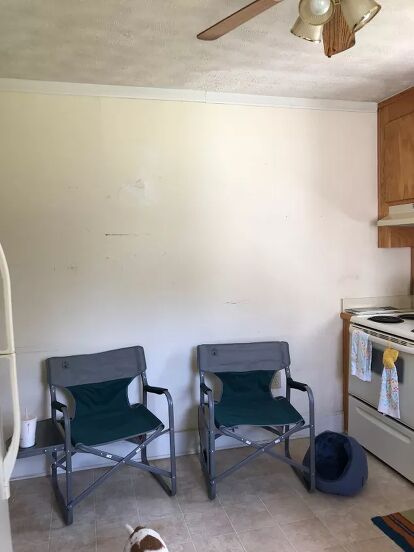























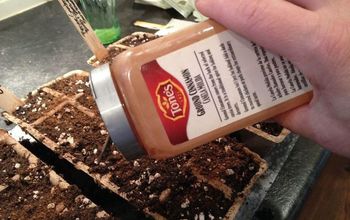






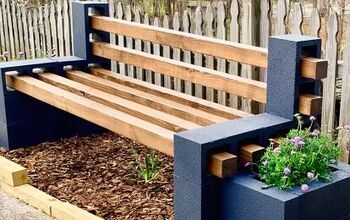
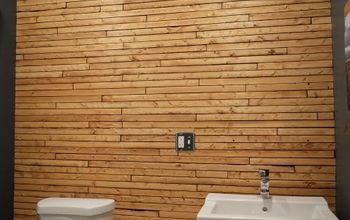
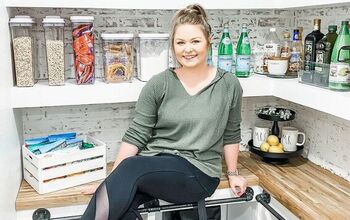
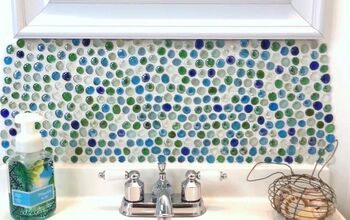
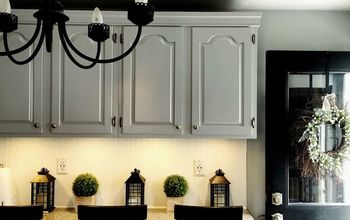




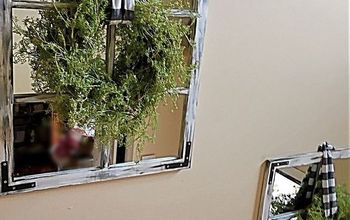
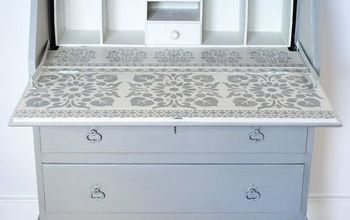

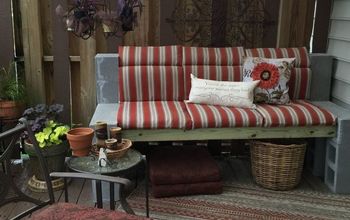



Frequently asked questions
Have a question about this project?